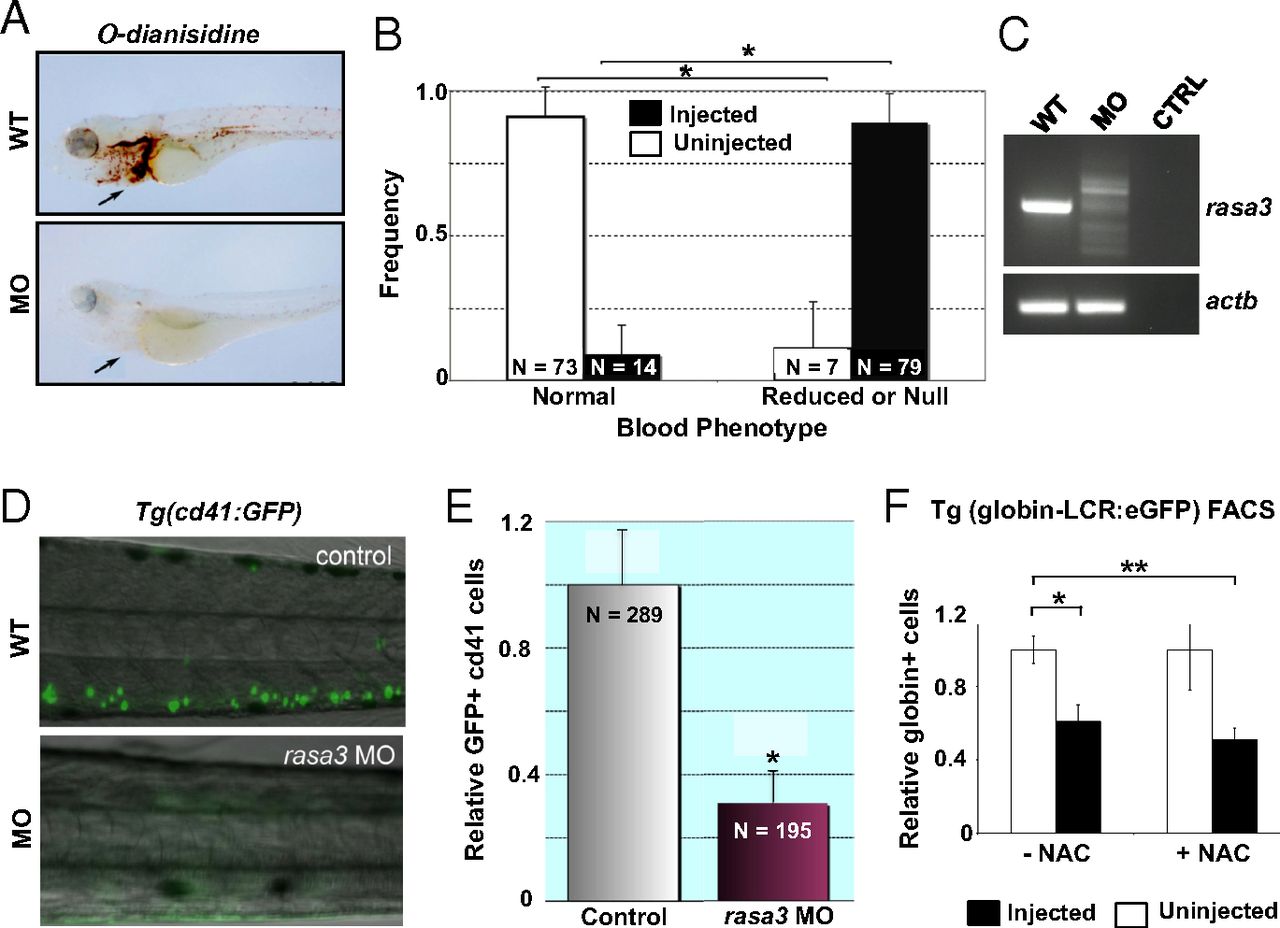Fig. 4
rasa3 knockdown in zebrafish recapitulates the scat anemia and thrombocytopenia phenotype. (A) In WT embryos, abundant ¿-dianisidine positive hemoglobinized cells are seen in the heart and vessels (arrow) at 72 h postfertilization, whereas positive cells are absent in rasa3 morphants (MO). (B) Quantitation of the range of embryos containing normal and reduced or null number of hemoglobinized cells at 72 h postfertilization from control (uninjected) and rasa3 MO (injected). X ± SEM; *P < 0.05, t test. (C) By RT-PCR, abnormally processed rasa3 mRNA splice forms are found in MO compared with RNA control (CTRL) and uninjected embryos (WT). actb serves as a control of off-target effects. (D) Silencing of rasa3 results in loss of GFP+ cd41-thrombocytes (green) in the transgenic Tg(cd41:GFP) line (MO) compared with control (WT). (E) Quantitation of GFP+ cd41-thrombocytes by flow cytometry in control and rasa3 morphant (MO) embryos. X ± SEM; *P < 0.05, t test. (F) Treatment of WT zebrafish (uninjected) and rasa3 MO (injected) from the Tg(globin LCR:eGFP) transgenic line with the potent antioxidant N-acetyl cysteine (+NAC) fails to improve anemia in the rasa3 MO embryos, indicating that generation of ROS per se is not a contributing factor in the anemia. NAC, exposed to vehicle carrier only. X ± SEM; *P < 0.05; **P < 0.01, t test.

